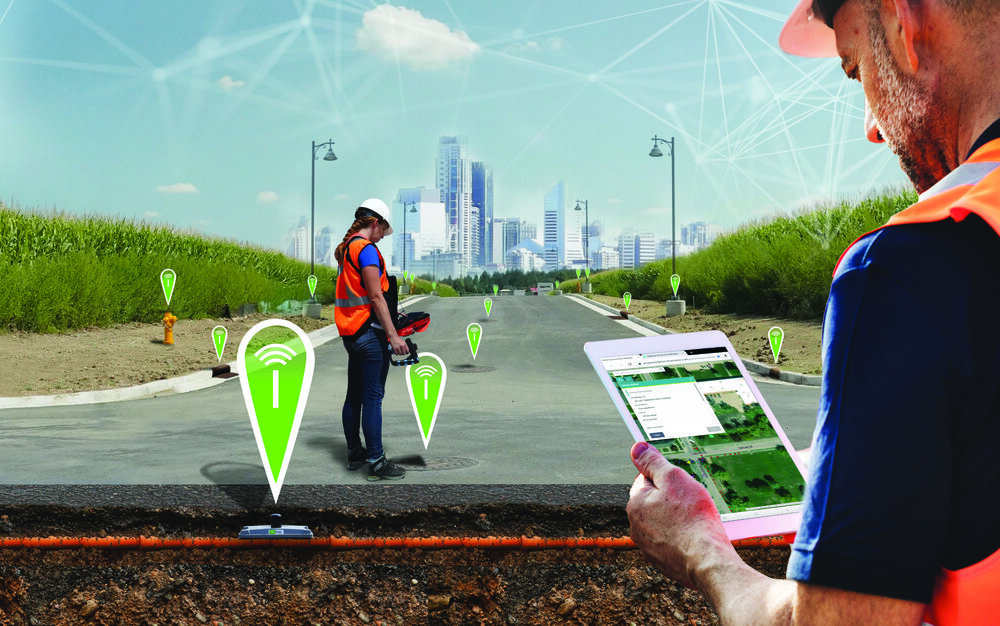April is Safe Digging Month - for good reason.
Blog by Emily Pierce, PLS, CFedS
As surveyors intimately understand, it’s very important to know what’s below. Your life could depend on it. National Safe Digging Month was created in 2008 by the Common Ground Alliance (CGA) to bring visibility to protecting workers, utilities and the public by working to prevent utility strikes during excavation. This group is comprised of companies and individuals in every facet of the underground utility industry, including Berntsen.
It’s interesting to note that although utility strikes are incredibly damaging and expensive (costing an estimated $30 billion annually in societal costs that include direct [facility repair] and indirect [property damage, medical expenses, business closures, etc.*]), there is no nationwide approach to marking, mapping and locating underground utilities. There’s also no requirement to report excavation damages to any centralized clearinghouse, except for the gas industry that reports major incidents to the Pipeline and Hazardous Materials Safety Administration (PHMSA). That’s why the CGA has developed a voluntary process for reporting strikes and damages.
The organization’s latest report presents the data of this voluntary reporting (and data from the PHMSA) in a very thorough way that looks at every aspect of utility strikes. They’ve found that “year over year, hundreds of thousands of damages occur, and most of them can be attributed to the same handful of persistent root causes.”** With the recent, massive investment in infrastructure, the overall trend of rising damages will likely continue.
The latest Damage Information Report Tool (DIRT) Report (from 2020 data reported in 2021) reveals some interesting information.
This image shows the DIRT Report data from 2020. Beginning in 2019 and continuing in 2020, the “big three” root cause groups – No Locate Request, Excavating Issues and Locating Issues – are approximately equal.
U.S. damages were down by about 12% in 2020 vs. 2019, likely due to the initial pandemic response that slowed the trend towards more construction projects. An analysis shows that even though the numbers of reported incidents were down, the same root causes persisted. Twenty-six root causes are tracked year-over-year and five of these account for 70% of the damage events. These five are:
Failure to notify the one call center/811 (the largest root cause of damages)
Excavator dug prior to verifying marks by test-hole (pothole)
Failure to maintain clearance
Abandoned facilities
Locator error
It’s pretty clear that lack of due diligence is behind many of the strikes. Construction projects often have pretty tight deadlines and perhaps field operators don’t feel they have time to call 811 (or maybe they don’t even know 811 is available). Even if a locator has been called, there’s no guarantee that the locator has accurately marked the underground facilities.
A solution is here
It doesn’t seem like this issue should be impossible to resolve – with today’s technology, solutions are available. Berntsen’s InfraMarker® Connected RFID™ is a solution that could make a huge impact on reducing utility strikes, and it’s already being used in by pipeline companies and in data centers to mark underground utilities. It uses RFID and middleware to tie physical assets to data in Esri’s ArcGIS using Field Maps or Survey123.
As more and more utilities and municipalities adopt GIS, Connected RFID is available to verify location and precisely identify what facilities and conflicts exist underground before excavation. RFID can be read through soil, asphalt and concrete, so anything marked can be located and identified, simply by scanning the RFID marker and accessing the record through Esri’s data collection tools. Data can be shared between utilities making this essential information available to all.
As more and more infrastructure projects get underway, it’s more important than ever to prevent damaging utility strikes. Connected RFID is leading the way in future-enabling connectivity of any underground (or above ground) asset.
Whether you’re involved with a large construction project or a DIY job, be sure to call 811 before you dig!



